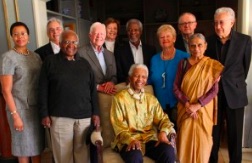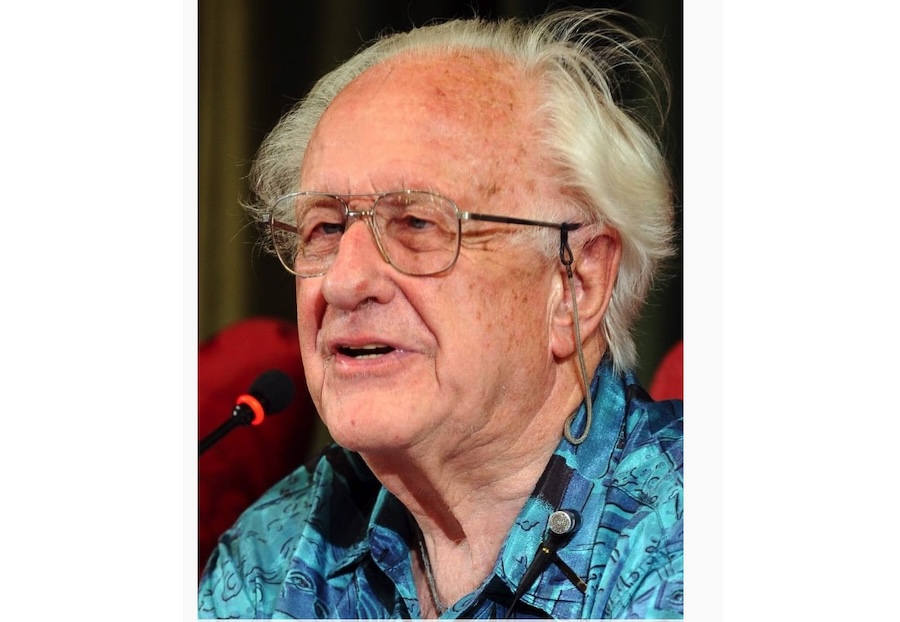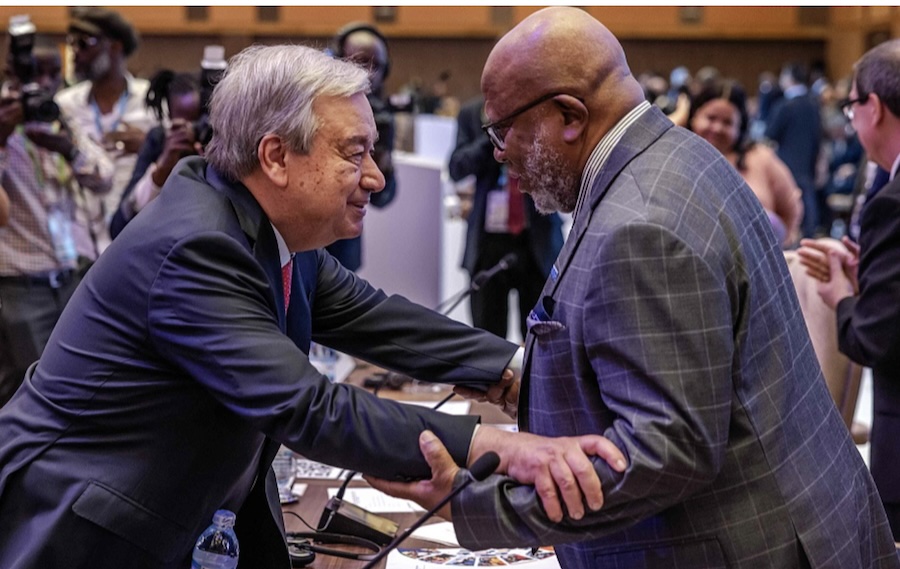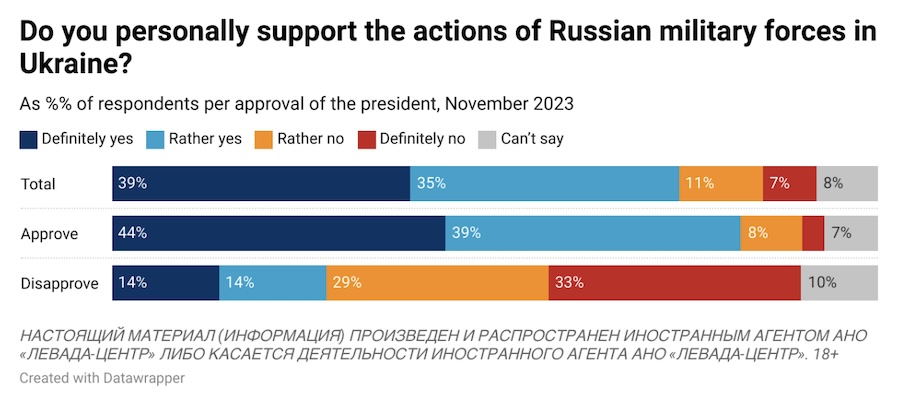DISARMAMENT AND SECURITY .
An article by Richard Gowan for Friedrich Ebert Stiftung
Ongoing crises keep multilateralism in turmoil, but ambitious reforms are still on the table. What to expect from the September 2024 UN Summit of the Future?
Germany faces a tough task trying to build consensus among members of the United Nations on how to strengthen multilateralism in the year ahead. The German mission in New York is working with Namibia to facilitate preparations for the Summit of the Future, an event that will take place during the annual high-level week of UN meetings in September 2024.

UN Secretary-General António Guterres originally proposed this summit in 2021 as an opportunity for presidents and prime ministers to debate improvements to the global system in the wake of the COVID-19 pandemic. But with arguments over Ukraine and Gaza simmering at the UN, diplomats fear it will be hard to make new agreements on international cooperation this year.
The right summit at the wrong time?
Guterres and his advisers argue that it is necessary to take a hard look at the state of multilateralism for three main reasons. Firstly, it is clear that existing international institutions lack the mechanisms and authority necessary to deal with challenges such as pandemics and climate change effectively. Secondly, there are as yet no serious global regimes to regulate new technologies such as Artificial Intelligence (A.I.), which the Secretary-General predicts will profoundly reshape societies, economies and international relations. Lastly, many non-Western countries feel that they lack real influence at the UN and in other international organizations, where the U.S. and European countries often still dominate decision-making.
The mood at the UN is currently very sour
In a best-case scenario, the Summit for the Future would be an opportunity for UN members to tackle these challenges simultaneously, reforming existing institutions to make them more inclusive and effective, and establishing new bodies to fill gaps in the system. Guterres has, for example, floated the idea of establishing a new international agency to regulate the uses of A.I., as the International Atomic Energy Agency (IAEA) oversees the uses of nuclear power.
While diplomats acknowledge the Secretary-General’s breadth of vision, many question whether this is a propitious moment to tackle such big issues. The mood at the UN is currently very sour. Developing countries have become increasingly vocal in criticizing richer states’ failures to meet past pledges to invest more in development aid and climate adaptation. The war between Hamas and Israel has reopened old wounds in the UN General Assembly. The bulk of states from the so-called “Global South” have condemned the U.S. and many European countries for failing to show solidarity with the Palestinians. Arab diplomats ask how the UN can hold talks on “the future” when there is no future for young people in Gaza.
A ‘Pact for the Future’: Germany and Namibia taking the lead
Germany and Namibia have volunteered for the unenviable task of managing preparations for the Summit of the Future against the bleak backdrop. The two co-facilitators are working on the initial draft of a Pact for the Future for leaders to adopt in September. Once they circulate this text – which is meant to be ready by the end of January – negotiations on the document will begin in earnest. This is likely to be a grinding and protracted process, as the General Assembly has agreed that UN members will have to agree the final Pact by consensus.
An opportunity for civil society groups that advocate a stronger multilateral system
This is not a prospect that fills New York-based diplomats with glee. Many see the existence of the summit as a problem to be solved, not an opportunity to be seized. But this may be a mistake. For as long as hostilities drag on in Gaza, it will be difficult to focus on the Pact of the Future.
But if and when the war recedes, talking about improving the international system – even in quite technical ways – could be one pathway to restoring some sense of common purpose among UN members, although it is unlikely to erase memories of recent disputes. The Summit is also an opportunity for civil society groups that advocate for a stronger multilateral system to focus attention on global issues, even if they cannot secure big reforms.
Mind the gaps: climate change and human rights missing
While Germany and Namibia led preparatory talks on the substance of the Pact last year, UN members were only able to agree on a skeletal outline. There will be chapters on: peace and security; development; science and technology; future generations and global governance. UN officials and diplomats say that they expect the paper to be 20 to 30 pages in length at most, and to be pitched at the strategic level. This means that even if negotiators do agree to some big reforms in principle through the Pact, it won’t go deep into the details.
The exact contents are still up for debate
Some observers have highlighted two potentially worrying gaps in this outline. One is climate change, which Guterres has previously argued should be an overarching theme for the organization. UN officials say that they hope the Pact will endorse existing agreements and processes for dealing with global warming, even if it doesn’t propose any new ones. The second notable omission from the outline is a dedicated chapter on human rights, although the Pact is supposed to refer to the rights-related dimensions of the other topics it covers. Many Western diplomats worry that the UN system as a whole is paying less attention to rights issues than in the early post-Cold War period, and are likely to insist that the Pact refers to common values and freedoms.
(Article continued in right column)
Question for this article:
What is the United Nations doing for a culture of peace?
(Article continued from left column)
More broadly, the exact contents of the Pact are still up for debate. The negotiators have no shortage of material. In the course of 2023, Guterres released a series of eleven policy briefs on issues ranging from education to the governance of outer space to stimulate the negotiations. He also convened a High-Level Advisory Board on Effective Multilateralism which released a report on potential reforms to international institutions last summer. But everyone involved in the process recognizes that UN members will pick and choose topics.
Reforming the international financial architecture
It seems certain that developing countries will want to focus a lot of upcoming discussions around the Pact on the oversight and activities of international financial institutions, including the World Bank and the International Monetary Fund (IMF). Many non-Western officials would like to gain a greater share of decision-making power in these institutions, which are currently still dominated by the U.S., the EU and other major Western economies. They would also like to see these global lenders make it easier for poor countries to access financing. While the Biden administration and European governments agree that it is necessary to get money flowing to vulnerable nations, it may be harder to get a deal on governance reforms.
UN Security Council reform
Another tricky global governance issue waiting in the wings is UN Security Council reform. Since Russia used its veto to block criticism of its all-out aggression against Ukraine in 2022, many UN members have argued that it is time to overhaul the membership and rules of the Council. While the Biden administration has also used its veto to protect Israel from pressure over its campaign in Gaza, the U.S. still claims to want reform. Germany, as a long-time aspirant to a permanent Council seat, might like to see progress too. There is, however, no chance that UN members will agree on a broadly acceptable model for reform in the next nine months. The best possible outcome may be for member states to agree to hold a set of high-level talks on the issue pegged to the 80th anniversary of the UN Charter in 2025.
Governing A.I. and other new technologies
If Security Council reform is a well-worn subject for UN diplomacy, the planned chapter of the Pact on “science and technology” could open up new fields for discussion. In addition to his proposal for an IAEA-type body to oversee A.I., Guterres has proposed that UN members agree a treaty banning Lethal Autonomous Weapons Systems (LAWS) by 2026, and establish new mechanisms to manage biotechnologies. Some powerful players at the UN agree that it is time to start developing more international rules of the road in this area. The U.S. has floated a non-binding UN General Assembly resolution on the use of A.I. to promote sustainable development. In parallel with the main Pact for the Future process, Sweden and Zambia are co-facilitating talks on a Global Digital Compact which could also be adopted in September; this agreement would outline guiding principles for managing the internet, A.I., and data.
Coalitions of member states may table more ambitious side agreements
But if this is a good time to talk about new technologies, diplomats and scientific experts seem less convinced that this is the right moment to establish new institutions and binding agreements around those new technologies. Marietje Schaake, a former Member of the European Parliament who participated in a panel advising Guterres on A.I. last year, recently argued that it is premature to start designing new agencies to govern this evolving field. Instead, she argues that governments and A.I. developers need to hammer out the basic principles and laws that should govern A.I. before building international frameworks to monitor them. The Summit of the Future offers a hook for exploratory discussions of this type, but it is probable that UN debates about how to govern such new technologies will extend well into the future.
Given the many obstacles to agreeing major reforms in the Pact of the Future, some UN members are already predicting that the document will prove fairly insubstantial. This does not mean that the Summit of the Future will necessarily be a dud. As I have argued elsewhere, coalitions of member states may table more ambitious side agreements – which would not require all UN members to assent – on advancing priorities such as women’s rights that can be signed off in September. As a leading advocate for focusing on the security implications of climate change, to take another example, Germany could well be part of a coalition pushing for greater UN engagement on climate and peace, even though Russia – which vetoed a 2021 resolution on the topic in the Security Council – would want to keep this out of the Pact.
The role of civil society
While UN member states will formally take the lead on these initiatives, civil society organizations can also add some extra energy to the pre-Summit process. Many diplomats, especially from smaller missions in New York, admit that they have had little time to think in depth about what the Summit can deliver. The Secretary-General has put a significant number of complex issues on the table for discussion while other urgent issues such the war in the Middle East, have sucked up time. In the coming month, non-governmental actors can step in to advise UN members on what the Summit can achieve on issues like new tech.
Civil society can add some extra energy pre-summit
Civil society actors can also use their global networks to focus more global attention to the Summit of the Future. UN officials admit that they have struggled to get the international media to focus on the event, given the sheer flow of bad news stories coming out of the UN in recent times. While Guterres would like to draw political leaders into this discussion about global issues (and gave visiting heads of state and government packs of his policy briefs at the UN last September) very few capitals are prioritizing UN reform. A push by international civil society networks in the coming months to raise awareness of the Summit would be welcome.
The way forward
Nonetheless, Germany and Namibia must make the best of their roles in preparing the Pact of the Future. There will surely be arguments among member states along the way. But the co-facilitators can at least aim to frame this process as an opportunity to promote diplomatic dialogue among UN members about the future of multilateralism after a very divisive period. It may be possible to agree on common starting principles and begin long-term dialogues on issues such as new technologies and international financing which, even if they do not lead to spectacular results in 2024, could pave the way for more substantive deals down the road.
About the author
Richard Gowan is the UN Director of the International Crisis Group (ICG) and oversees the organization’s advocacy work at the United Nations in New York.









